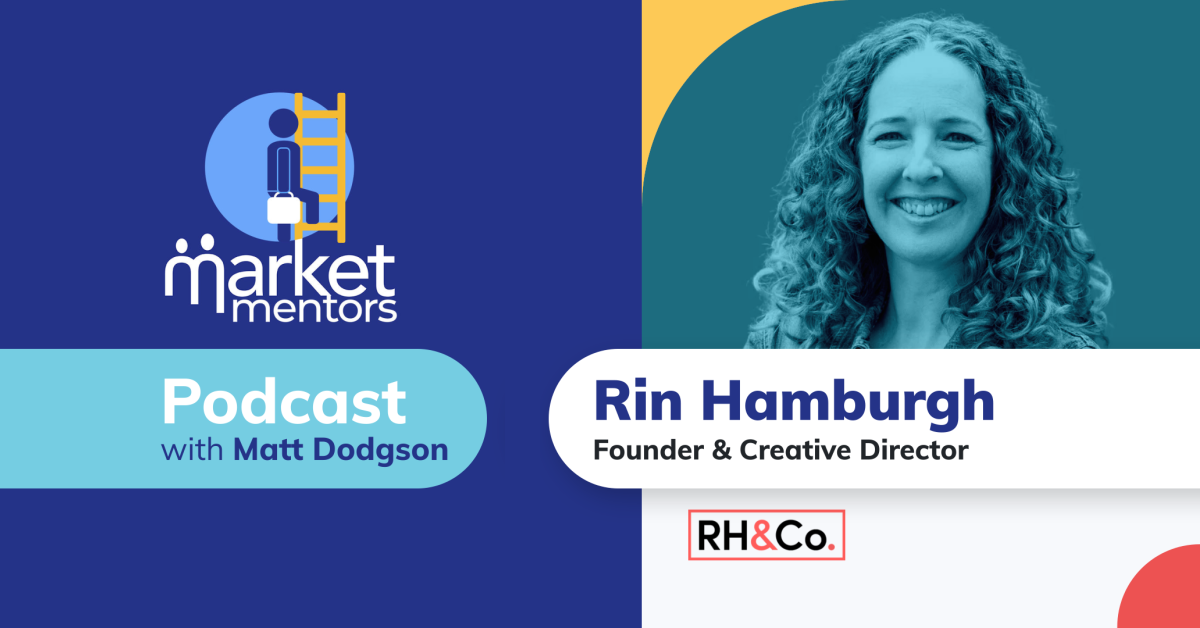
In competitive markets, how can you use expertise-based positioning to help you create content that engages your audience?
In this podcast, we catch up with Rin Hamburgh, a former journalist and experienced copywriter, to discuss research that her agency has conducted into what the C-suite reads.
So, if you’re someone who wants to create content to engage the C-suite or you want to create an expertise-based marketing strategy that can help you differentiate your business, then stick around because we cover everything you need to know.
Who they are: Rin Hamburgh is the founder and director of RH&Co.
A bit of background: Rin is a former journalist turned copywriter and now leads RH&Co, a strategic brand copywriting agency that she founded in 2016 and is based in Bristol. They specialise in working with expert-led businesses to create hard-hitting thought leadership content that builds brand awareness and authority and allows them to lead the conversation.
Where you can find Rin:
Find out more and connect with Rin here
There are many ways to position a brand in the market. And for B2B technology companies today, it’s nearly impossible to compete on features. Sure, you may be fortunate enough to create a category or be able to effectively use narrative design, but those success stories are for the lucky few. So what’s the answer?
Expertise-based positioning.
Expertise-based positioning is a strategy in which a company differentiates itself and establishes a strong presence in the marketplace by emphasising its in-depth knowledge, mastery, and proficiency in specific areas, disciplines, or subjects relevant to its solutions or services. But before you dive into creating a strategy like this, let’s discuss the benefits.
There are a number of benefits to your business when using expertise to position it. Here are two key benefits:
Further Reading: Expertise: what is it and how do buyers perceive it
So we’ve discussed what expertise-based positioning is and the benefits of deploying a marketing strategy around it. But how can we use this to engage people in the C-Suite, e.g., CEO’s, CFO’s, CMO’s, etc.? First of all, let’s discuss why marketing to the C-suite is so important and difficult.
Marketing to the C-suite is crucial because these individuals have the authority to make important purchasing decisions. They possess vast industry knowledge and high expectations for the products and services they invest in. However, reaching the C-suite can be challenging due to their busy schedules and limited time for content consumption.
In the research that RH&Co conducted, they found that, ‘There is no single channel that will guarantee you an audience with a CxO. You’ll need to have a presence on social media, think carefully about SEO, work at your PR, and build your networks. Content always needs to be produced strategically and this is even more important when you’re trying to get in front of the C-suite.’
It’s easy to have preconceived ideas about persona’s. And we all understand the importance of understanding your audience before marketing to them.
So what does research tell us about marketing to the C-suite?
Rin goes on to explain that people in the C-suite rarely get involved in the details. ‘Because, actually, at that level, you are not doing the work as such; you are facilitating and overseeing it.’
So they’re not looking for what HR system is best, as an example, but are more interested in supporting their team to outwork company objectives.
The second insight is that the C-suite are horizon setters. They are very much consuming content to understand what might be happening in the future.
“I read to make sense of the broader picture, anticipate the future, see what trends are emerging in our sector and beyond. Innovation, ideas and insights that we can draw into our organisation from other places – those are the things that I focus on.” – Dan Wood, Chief People Officer at UWE
Ok, so we have research that points to people in C-suite being agenda setters and horizon scanners, but how does that relate to the type of content you should be producing?
When asked in the survey why they would read content, the two main reasons were that they wanted to get an overview of a subject they didn’t know much about (69%) and to gauge an industry view (59%).
And secondly, to help keep the C-suite engaged with your content, you should include original research, opinions, and trends or predictions.
As an expert brand, here are some steps you can take to ensure your expert-led content and marketing strategy work.
“It might not be a surprise to hear that the number one bugbear for CxOs is content that’s too complex or poorly explained (56%). What’s worth noting is that they are least likely to be put off by content that is ‘too basic / simplistic’ (22%).”
Rin Hamburgh
Of course, we wouldn’t be commercially focused if we didn’t talk about return on investment.
And should we even be thinking about MQLs and SQLs when following expert-based marketing?
During the podcast, Rin emphasises that measuring the success of brand building can be challenging due to its multifaceted nature. It’s crucial to define the specific metrics that align with your business goals rather than relying on vanity metrics like website hits. Engagement metrics, such as the seniority level of the audience viewing your content on LinkedIn, can be more insightful. Customising your metrics to match your objectives along the customer journey is essential.
Also, being realistic about timescales is vital, as brand building and content marketing focus on long-term reputation and engagement rather than immediate sales.
Subscribe to our fortnightly newsletter to hear about our latest podcasts, blogs, career advice & jobs.